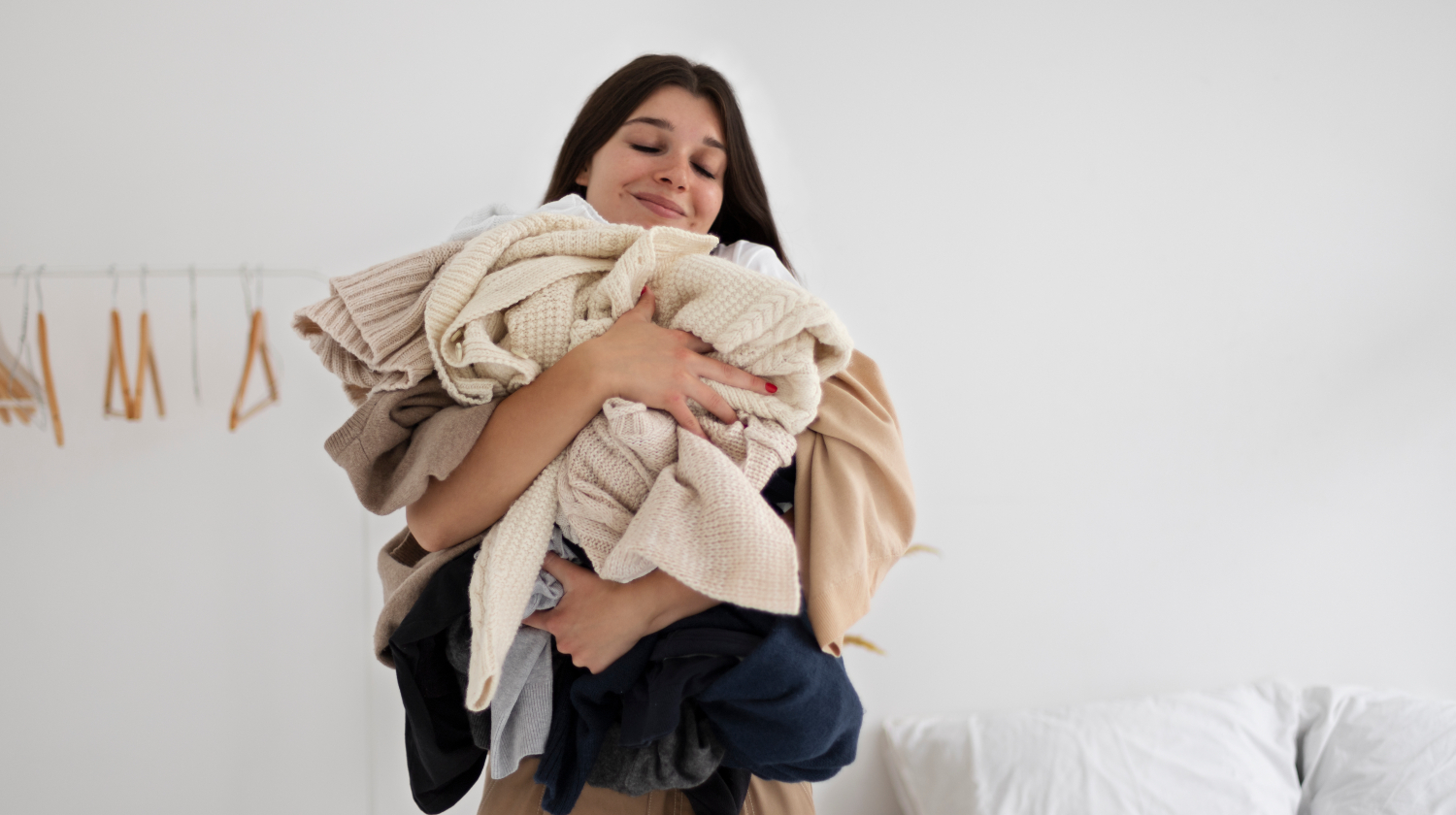
Clothes and textiles
Have you grown tired of a piece of clothing, or has it become damaged? Here you’ll find information on how to sort your textile waste.
What to do
- Clean and usable textiles should be placed in the textile collection. At our housing areas, you’ll find collection containers from Human Bridge. Read more below.
- Damaged, stained or worn-out items should be disposed of in the residual waste.
More about textile collection
Human Bridge’s collection containers are available in all our housing areas, except at Magasinet (but it's coming soon). You can leave intact clothes and other textiles in these containers. The containers are located next to the waste station or in the Gröna rummet (the bulky waste station).
What can you leave in the containers?
- Clothes
- Shoes
- Household textiles like bed sheets, curtains, and towels
- Belts, hats and caps
- Soft toys
- Bags
Read more on Human Bridge's website (in Swedish).
Please note
- Place your textiles in a regular-sized plastic bag and tie it closed.
- Do not leave anything wet or heavily soiled in the containers.
- No large sacks or suitcases – they may get stuck and block the container.
What happens to your old jumper?
The items you leave in the collection containers are given a second life! By donating your textiles to Human Bridge, you contribute to reuse and recycling, while also supporting important humanitarian aid projects around the world. Want to know more? Visit Human Bridge’s website.
Reduce your textile waste – smart tips!
In Sweden, we buy an average of 25 new garments per person per year. According to the Swedish Society for Nature Conservation (Naturvårdsverket), this must be reduced to a maximum of five per year to meet climate targets. Take a look at The Swedish Environmental Protection Agency’s tips for sustainable textile consumption (in Swedish).